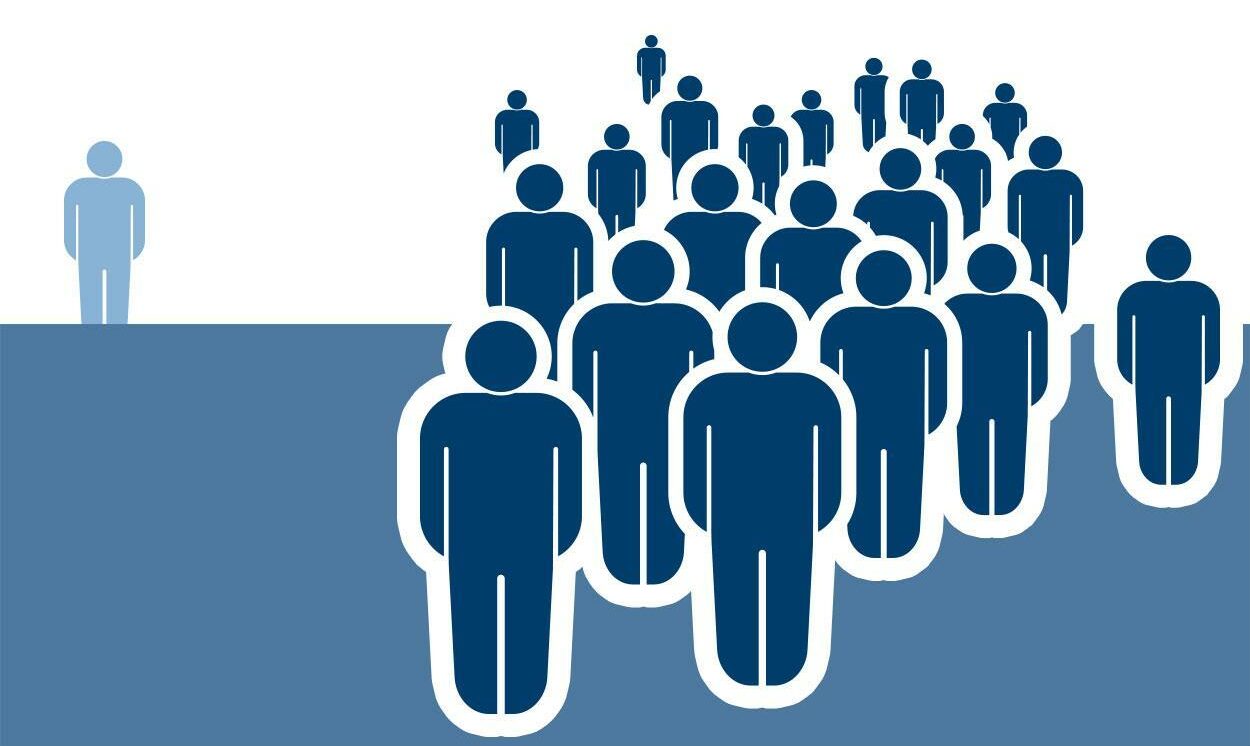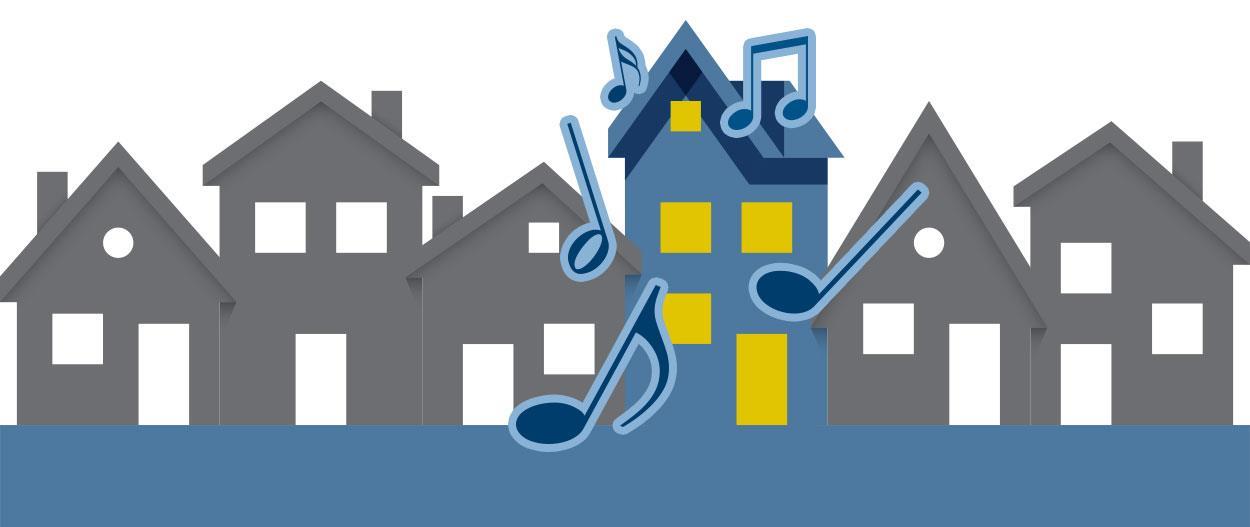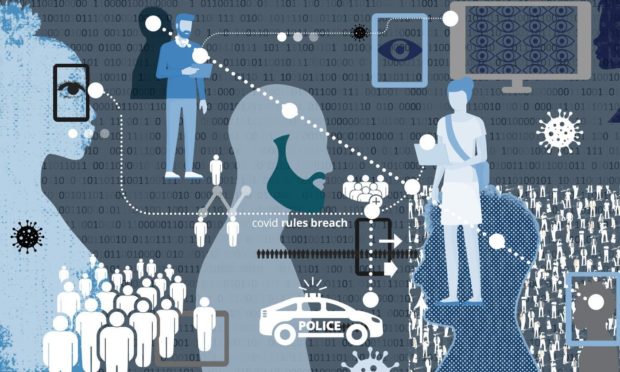With coronavirus restrictions easing we looked at the enforcement data over the past year and how the pandemic has been policed in your area.
Exclusive information received through a freedom of information request has also revealed tens of thousands of reporting forms have been filled out by Scottish residents warning police of Covid-19 breaches.
What is a Covid-19 crime?
A new law called the Coronavirus (Scotland) Act 2020 received Royal Assent on April 6 last year, in a response to the pandemic.
Under the legislation, Police Scotland was given powers in order to help manage the spread of Covid-19.
Officers are able to use the powers to deal with situations if people do not comply with social distancing restrictions, or “requests to undergo screening and assessment, or requests to self-isolate”.
In enforcing Covid-19 restrictions, police will engage with individuals, asking if they are aware of the restrictions, establishing individual circumstances and find out how quickly someone can comply with regulations. They will also explain the risks to public health and encourage voluntary compliance.
If a person still does not comply, they can enforce the act.
Since the end of March last year, officers have been recording coronavirus enforcement that has taken place, from those who were asked to move on, to people who have been arrested for breaching Covid-19 restrictions.
Over the past year, Police Scotland has been publishing its enforcement data which can be broken down by date, type of enforcement, police division area and area command.
However, all of the data is reliant on officers manually recording any enforcement, and true figures may be higher.
When are crimes being committed?
Looking at the average number of enforcement actions by day of the week, Friday was generally the busiest day for police with an average of 15, with only slight variation across the different types of enforcement.
Figures released by the Scottish Government show crimes recorded related to coronavirus have fallen in the past year. In May 2020, there was 1,654 crimes recorded, compared to 1,434 in May 2021 – a drop of 13%.
The number of crimes committed reduced following the first lockdown of 2020, however have been increasing since August last year, peaking in February, with 4,199 recorded crimes. They are now decreasing again.
The lowest number of recorded crimes was recorded in July 2020 at 17.
A similar trend has been recorded throughout 2021, with the number of people arrested increasing at the start of the year compared to last year’s levels.
Arrests peaked on March 6, 2021, when 18 arrests were made – the day that Rangers fans celebrated their Premiership win.
From January 1 to June 30, there was 438 arrests for Covid-19 related crimes, compared to 533 for the whole of 2020 across Scotland.
This means more than 80% of all arrests for breaches of coronavirus regulations last year has already taken place in the first six months of the year. (82.18%)
The highest number of arrests took place in April 2020, as lockdown began, with 146 people arrested that month. The second highest month was February this year with 119 arrests made.
Covid-19 reporting form

In December, Police Scotland introduced a Covid-19 crime reporting form, which meant that people could go online and alert officers to people, groups or businesses breaching coronavirus regulations. It also allows people to report any Covid-19-related frauds.
Each form that is submitted is reviewed and assessed by Police Scotland service centres to identify what, if any, police response is required.
Those who fill out the form are asked whether the breach is occurring in Scotland, and whether it is currently happening. Once these have been established, it asks the person filling it out who it involves – a business, a group of people, an individual or a fraud or scam.
If a group of people is selected, users can choose how many people are included, from 2-6 people, 7-30 people or more than 30.
Under businesses, users are asked whether it is a pub, bar, club or restaurant and whether face coverings are being worn.
If fraud or scam is selected, people are advised that if a business, charity or organisation is currently under cyber attack with data potentially at risk to call 999.
Information obtained by the DC Thomson data team shows that between December 2, 2020 and May 18 this year, a total of 28,507 forms were filled out.
Breakdowns of type of form were disclosed from February 16.
From February 16 to May 19, 1,222 forms were lodged against businesses, and 19 were to do with reporting fraud.
The largest number of forms were submitted about groups of people – a total of 12,604.
In addition to this, a further 1,236 were filled out about individuals.
A meeting of the Scottish Police Authority Independent Advisory Group on coronavirus powers held at the start of June stated that there had also begun to be an increase in online reporting, expected to be tied to good weather.
Minutes of the meeting stated: “Changes highlighted were an increase in online reporting and an increase in work for C3, which may have been related to good weather and restrictions easing. The group heard some reports through online reporting related to incidents which were not actual breaches as the numbers were within recently increased limits for gatherings.”
Superintendent Dave Ross said: “An online form is already available to allow the public to report lower level complaints and help ease the demand on our 101 and 999 services, particularly during the summer months which are the busiest for our control rooms.
“A separate form was also introduced to allow people to report ongoing breaches of coronavirus regulations in Scotland which we have found extremely beneficial and had good engagement from the public.
People shouldn’t have to call about their neighbours because everyone should be taking responsibility to do the right thing to help stop the spread of coronavirus.”
Superintendent Dave Ross
“We would always encourage anyone to contact the police if they have concerns that someone is breaking the law, but people shouldn’t have to do that. People shouldn’t have to call about their neighbours because everyone should be taking responsibility to do the right thing to help stop the spread of coronavirus.”
Police Scotland declined to give a localised breakdown by form, or how many of the forms were actioned on, on the basis that it would exceed the cost of a freedom of information request.
Where are Covid-19 crimes being recorded the most?
Tayside and the north-east had some of the lowest levels of enforcement action in the country across the whole pandemic.
Total enforcement actions in Tayside peaked on May 28, 2020 – the day First Minister Nicola Sturgeon announced the first round of lockdown easing.
The most Fixed Penalty Notices were handed out on November 21, 2020, the day Scotland moved into level four restrictions.
Approaches to Covid law enforcement
The police have a variety of options at their disposal when dealing with Covid breaches ranging from a member of the public obliging to being ‘asked/informed’ to move along (the most common action), to an arrest taking place (less frequent). Over time, some police divisions have varied their approach.
In October 2020 across Tayside 80%, or 344, of a total of 428 enforcement actions were ‘asked/informed’ and no arrests were made. The rate of fines issued increased from November onwards, when the 5 Tier Covid system came into force.
Tayside and Fife moved into Level 3 restrictions on November 10. November 2020 had the highest rate of FPNs issues by police than any other month, at 31% of 277 total enforcement actions.
In Fife, 94% out of a total of 2297 enforcement actions involved ‘asking/informing’ a member of the public to oblige in September 2020. 13 arrests were made (a rate of 0.57%) and 10 FPNs were issued (0.44% of all actions).
In contrast, during May 2021 only 34% of enforcement actions were ‘asked/informed’, at 114 of 331 total enforcement actions, and there was a higher rate of FPNs than in other months, at 26% or 87 issued. Despite a higher occurrence of FPNs issued, no arrests were made in this month. The month with the highest rate of arrests in Fife was July 2020, at 3.7%.
Difference in methods
In May’s meeting of the Independent Advisory Group, which was set up to scrutinise Police Scotland’s use of coronavirus powers, the difference between police force methods was discussed.
Minutes from the meeting state: “John Scott reflected on the use of social media by police forces, citing the events in George Square, Glasgow, as a positive example of using social media to provide communications.
“ACC Ritchie (ACC Gary Ritchie of Police Scotland) sought comment on the challenge of consistency across various police forces in policing the regulations. The group heard that research showed that communication on regulations could be somewhat diluted by the time it reached front line officers. It was possible therefore that, especially with the frequency of changes, national regulations could be interpreted differently by different forces.”
Meanwhile, in June’s meeting, it was discussed that decreases in police interventions may be linked to there being less rules to break, and “the use of officer discretion as regulations changed and relaxed.”
House parties and Covid laws

Police officers have also been cracking down on house parties as part of its enforcement actions in the past year.
A freedom of information request revealed that across Scotland, officers have been called to 3,881 house gatherings breaching restrictions, and have been called to 6,598 gatherings.
In Tayside and Fife, officers were called to attend 3,789 house gatherings, with 2,386 reported breaches recorded between January 5 and April 26.
Covid rave, inflatable pub and other local lockdown rule breaches revealed
A total of 5,945 FPNs were handed out in this time, and 617 arrests made.
Assistant Chief Constable Alan Speirs said: “Our approach throughout the pandemic has not changed. Officers will engage with the public, explain the legislation and encourage compliance, but will not hesitate to use enforcement as a last resort.
“We have detected ‘spikes’ in enforcement activity and this can usually be linked to specific issues, such as large numbers of people breaching regulations at public parks, attending illegal gatherings or house parties, but our approach has not changed.
“This approach will remain as, hopefully, restrictions continue to be eased over the coming months and we move back to a more normal way of life.
“A recent interim report from the Independent Advisory Group to examine our response to the pandemic, and chaired by leading human rights lawyer John Scott QC, found that our use of emergency powers remains compliant – both in application and spirit – with our values of integrity, fairness, respect and a commitment to upholding human rights.”
In April 2020, it was announced that an Independent Advisory Group, chaired by John Scott QC, would be set up, reporting directly to the Scottish Police Authority.
Its purpose was to review Police Scotland’s use of the powers to tackle coronavirus, with any urgent actions identified by the group to be implemented as necessary.
All of the data from this story can be found here.
More from the data team
-
Coronavirus in Scotland – track the spread in these charts and maps
-
Covid vaccine in Scotland: Track the rollout progress with these charts
-
Coronavirus in Scotland – here are the key demographics

